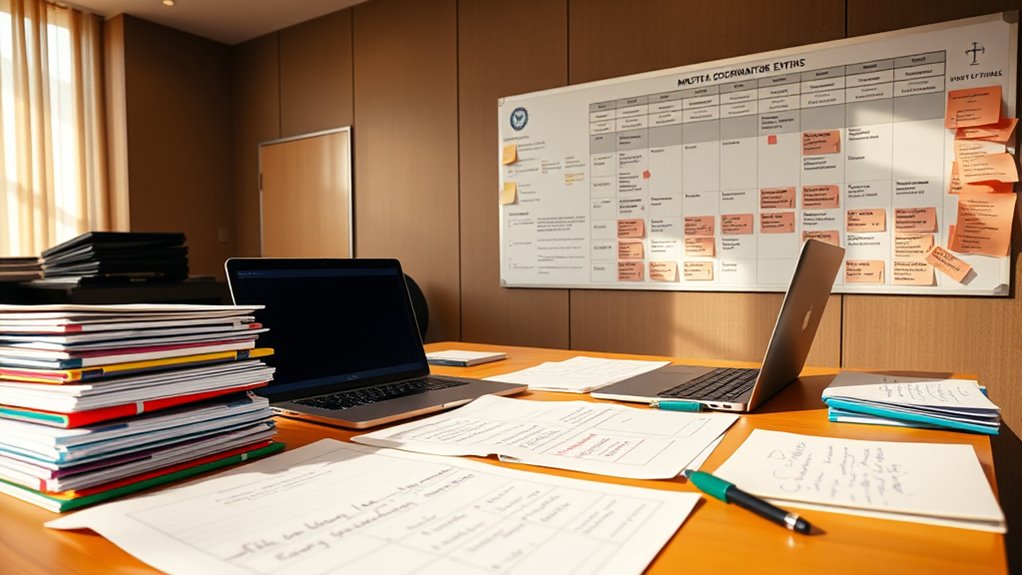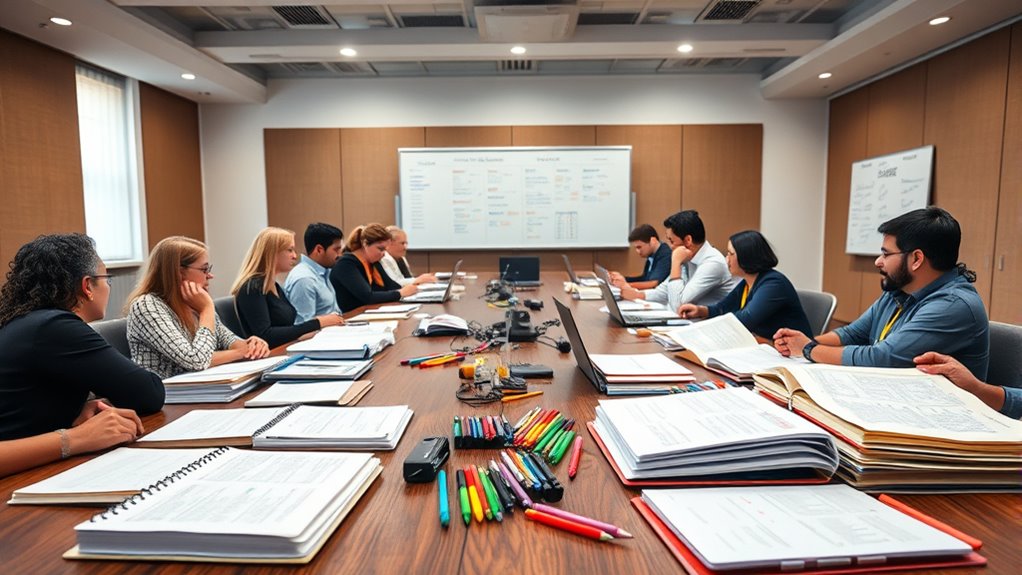To manage documentation effectively for multi-day events, switch to digital recordkeeping to guarantee quick access, updates, and seamless sharing among team members. Use cloud platforms and event apps to organize agendas, maps, and attendee info, reducing paper costs and errors. Digital materials can be updated instantly, enhancing attendee experience and enabling real-time feedback. Embracing these practices promotes organization, efficiency, and sustainability—discover more ways to streamline your event management approach as you continue.
Key Takeaways
- Implement a centralized cloud platform for real-time access, updates, and sharing of all event documentation.
- Digitize attendee materials such as agendas, maps, and handouts for easy distribution and instant updates.
- Organize documents into clear folders for schedules, contracts, contacts, and attendee info to streamline management.
- Collect and analyze feedback through embedded surveys during and after the event to improve future planning.
- Ensure all team members use the latest digital files to minimize errors and miscommunications throughout the multi-day event.

Planning a multi-day event requires careful management of documentation to guarantee everything runs smoothly. One of the most effective ways to do this is through digital recordkeeping. By maintaining all your documents electronically, you can access, update, and share information quickly and securely. Digital recordkeeping not only reduces the risk of losing physical papers but also streamlines collaboration among team members, especially when working remotely or across different locations. You can organize your files into folders for schedules, contracts, vendor contacts, and attendee information, making it easy to locate specific documents when needed. Additionally, using cloud-based platforms allows multiple people to access the latest versions of files simultaneously, ensuring everyone stays on the same page. This approach minimizes errors and miscommunications that often happen with paper-based systems.
When it comes to attendee materials, digital recordkeeping proves particularly beneficial. Instead of printing and distributing physical materials, you can create digital packets that attendees can access via smartphones, tablets, or laptops. This not only saves costs on printing but also aligns with environmentally friendly practices. You might prepare digital agendas, maps, speaker bios, workshop handouts, and other relevant documents, making them easily accessible through a dedicated event app or a secure online portal. Attendees appreciate having everything at their fingertips, which enhances their experience and keeps them engaged. Plus, you can update attendee materials in real time if any changes occur, such as schedule shifts or last-minute speaker additions, without the hassle of reprinting. Incorporating digital recordkeeping for attendee materials can also facilitate easier post-event analysis and follow-up communication.
Another advantage of digital recordkeeping for attendee materials is the ability to gather feedback and track engagement. You can embed surveys or feedback forms directly within digital packets or event apps, allowing attendees to share their thoughts instantly. Collecting this data helps you improve future events and ensures that your documentation process is aligned with attendee preferences. Additionally, digital attendee materials are easier to organize and analyze after the event, providing valuable insights into what worked well and what needs improvement.
Frequently Asked Questions
How Do I Handle Last-Minute Documentation Changes?
When handling last-minute documentation changes, you should use real-time editing to update files instantly and verify everyone has the latest info. Implement version control to track changes and avoid confusion. Communicate updates promptly to your team, and double-check for accuracy before sharing. This approach keeps your documentation current, minimizes errors, and ensures smooth coordination, even when quick adjustments are needed during multi-day events.
What Are Best Practices for Digital vs. Paper Documentation?
When choosing between digital storage and paper archiving, you should prioritize digital for its ease of access, quick updates, and space-saving benefits. Use secure cloud platforms for real-time collaboration and backups. Keep paper archived for critical documents that need physical preservation or legal validation. Always make certain both methods are organized systematically, with clear labels and secure storage, so you can easily locate and update information when needed during your multi-day events.
How Can I Ensure Documentation Security During Multi-Day Events?
To keep your documentation safe during multi-day events, you should prioritize access control and data encryption. Limit access to authorized personnel only, using secure login credentials. Encrypt sensitive data both in transit and at rest to prevent unauthorized viewing. Regularly update security protocols, monitor access logs, and use secure networks. These steps help protect your documents, ensuring they remain confidential and intact throughout the event.
What Tools Are Recommended for Real-Time Documentation Updates?
You should use tools that support collaborative editing, like Google Docs or Microsoft 365, for real-time updates. These platforms allow multiple users to edit documents simultaneously, ensuring everyone stays on the same page. Pair them with secure cloud storage solutions like Dropbox or OneDrive to keep your files synchronized and accessible from anywhere. This combo streamlines real-time documentation updates and maintains security throughout your multi-day event.
How Do I Coordinate Documentation Across Multiple Teams?
You can’t afford to let documentation fall through the cracks—it’s like juggling flaming torches! To coordinate across multiple teams, establish clear communication channels and use consistent documentation templates. Regular check-ins help guarantee everyone stays aligned, and shared digital platforms keep updates accessible. By streamlining team communication and standardizing templates, you create a cohesive system that keeps all teams on the same page, even during the busiest event days.
Conclusion
By managing your documentation effectively, you create a smooth, memorable event. Think of it as the sturdy backbone supporting an intricate dance—without it, chaos could take the lead. When you stay organized, you can enjoy the event’s vibrant moments instead of fretting over misplaced files. So, embrace the process; it’s your secret to turning multi-day events from stressful to spectacular, much like a well-rehearsed performance that leaves everyone inspired and enthusiastic for the next act.









